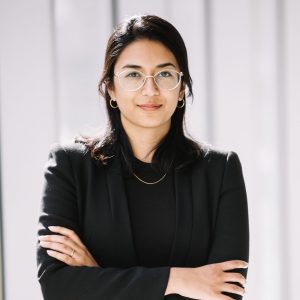In 2008, New Harvest funded an environmental impact assessment of cultured meat compared to conventionally produced livestock at Oxford University by Hanna Tuomisto. It was published in Environmental Science & Technology in 2011 and can be accessed here.
It was the first time there were numbers associated with the environmental benefit of cultured meat and has since been cited countless times by both researchers and the media.
The study sparked further investigation into the impacts of cultured meat production, independent of New Harvest. Hanna published further research in 2012 and 2014, and other researchers in the United States published a new life cycle assessment on cultured meat in 2015.
The Story
On August 12, 2008, Jason Matheny, New Harvest’s founder and Executive Director put out a request-for-proposals on investigating the environmental impacts of cultured meat. The research was to be peer-reviewed and published in an academic journal – New Harvest would simply fund the work. New Harvest contributed $10,000 to this research.

Hanna Tuomisto at Oxford University submitted the selected proposal. She was to perform a life cycle assessment, based on a review of current research, of the impact of cultured meat production as compared to conventional meat production. The authors explored the impacts that cultured meat would have on greenhouse gas emissions, land and water use, as well as opportunity costs of land use, should it completely replace conventional meat production in all 27 member states of the European Union.
On June 17, 2011, the paper was published in the journal Environmental Science & Technology.
The full paper can be accessed here.
Research Highlights
The paper predicted that, based on current published figures and research, complete replacement of conventional meat with cultured meat would result in an incredible 78-98% reduction in greenhouse gas emissions, 99% reduction in land use and 82-96% reduction in water use,and 45% reduction in energy use.
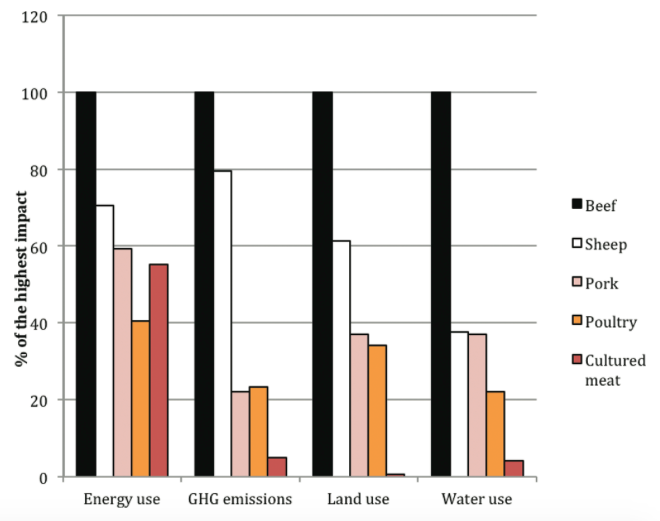
Comparison of primary energy input, greenhouse gas (GHG) emissions, land use, and water use of cultured meat production with conventionally produced European beef, sheep, pork and poultry per 1000 kg edible meat as a percent of the impacts of the product with the highest impact in each impact category.
In addition, the authors note that cultured meat could help reduce most environmental impacts of livestock production if the land released from livestock farming was used for providing environmental services. Cultured meat production could have potential benefits for wildlife conservation for two main reasons:
i. It reduces pressure for converting natural habitats to agricultural land
ii. It provides an alternative way of producing meat from endangered and rare species that are currently over hunted and over fished for food
However, they point out that it may also have some negative impacts on rural biodiversity due to the reduction in need for grasslands and pastures, depending upon how the land is used. In some hilly areas, livestock plays an important role in maintaining the open landscapes that are preferred over forested hills. The conversion of grasslands into forest, and arable-lands to producing energy crops for biofuel, for example, might benefit some species whilst others may suffer.
The Need for Further Research
The study has received criticism. (You can read critical accounts on this blog and on the website of Earthsave Canada).
The main criticism is that since a cultured meat production industry doesn’t yet exist, the paper is basically “a fairly complex thought experiment.” It therefore is based on a number of assumptions, such as the use of Cyanobacteria hydrolysate (an algae that can be grown in large ponds) as the nutrient and energy source for muscle cell growth, when we have not yet proven that meat tissue can even be grown using this nutrient source.
One significant problematic assumption was made in the Methodology and Data section of Hanna’s paper: “As cells produce heat during the growth, additional energy inputs in heating of the reactor are not required.” Many researchers have pointed out that this is an extremely unlikely scenario.
The authors do acknowledge that “as the technology for producing cultured meat in large-scale production plants is currently not well defined, there are many uncertainties about the data of the environmental impacts of cultured meat production presented in this paper.” Tuomisto and others are working towards more accurate speculative life cycle assessments. This becomes easier as cultured meat research advances and more is known about the processes involved.
Other considerations include the use of energy from renewable sources, nutrients from sources other than Cyanobacteria, and water measurements that consider green, blue, and grey water footprints.
The Importance of This Work
This initial environmental assessment paper has been cited a countless number of times by both researchers and the media.
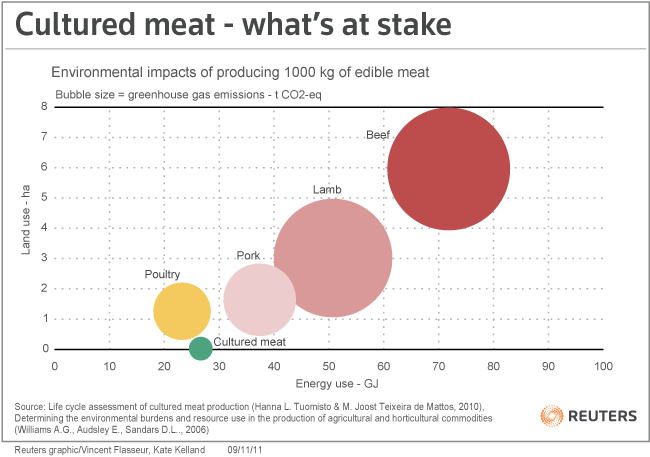
For the first time, there were numbers associated with the environmental benefit of cultured meat over conventionally produced livestock. The paper helped to extend New Harvest’s mission from one focused on animal welfare to one also focused on the environment and mitigating climate change.
The goal of this research was to expand interest and investigation on cultured meat. The media surge associated with the numbers from this study helped 1) attract more people to cultured meat as an area of research, and 2) stimulate further life cycle assessment work.
Written by Isha Datar on July 22, 2014
Update 1
Hanna Tuomisto has gone on to do further research on cultured meat’s impact independent of New Harvest funding. She published further works in 2012, and in 2014.
The 2014 research included input from Marianne Ellis, a chemical engineer at the University of Bath who focuses on bioreactor design. Marianne was involved to help correct for the assumption that heat would not be required in a cultured meat bioreactor. The paper also considered different feedstock sources of nutrients, including wheat and corn.
The full paper can be accessed here.
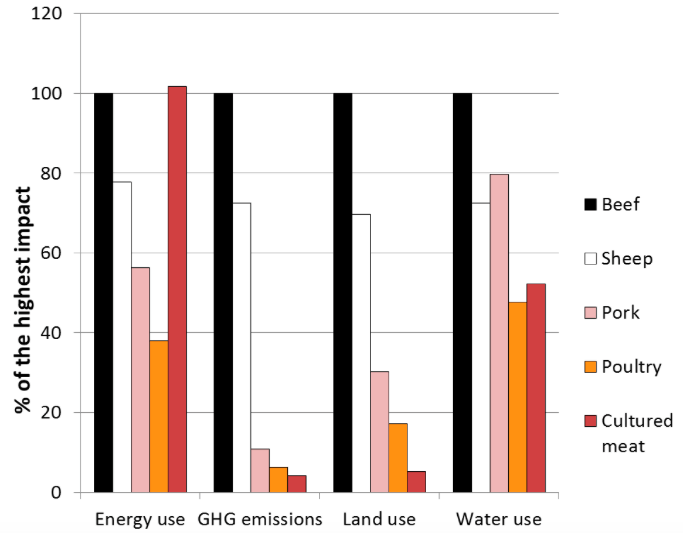
Comparison of environmental impacts of cultured meat with European livestock meat.
The paper compared land use and global warming potential of cultured meat to meat as other protein sources as well.

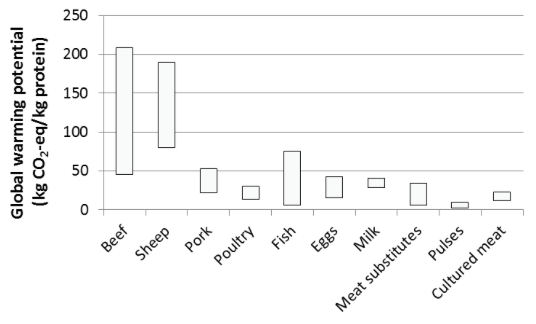
As the authors note, “We conclude that the uncertainties in the environmental impacts of cultured meat remain high”, and that “more research on development of cultured meat technology is needed before more reliable estimates of the environmental impacts can be provided.” We agree.
Written by Isha Datar on November 19, 2015
Update 2
Carolyn S. Mattick, Amy E. Landis, Braden R. Allenby, and Nicholas J. Genovese, researchers in the United States, have published new life cycle assessment work on cultured meat in the journal Environmental Science & Technology.
The full paper can be accessed here.
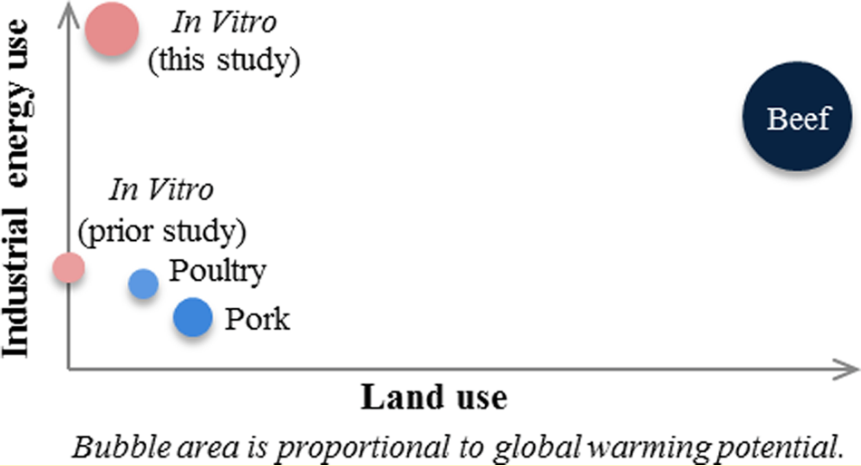
Carolyn, Amy, and Brad also published an article about their research in Slate magazine. Carolyn and Brad published another piece in Issues in Science and Technology. Their work has stimulated much conversation on cultured meat’s ability to minimize our ecological footprint.
We’re excited to see a continued discussion, independent of New Harvest, on the impacts of cultured meat production. We hope to spark further investigation in this worthwhile area of research.
Written by Isha Datar on November 19, 2015


